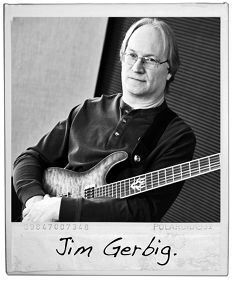Latest Blog
Sep 08, 2016
Sandy the Foundry’s Hospitality Manager is retiring
Apr 07, 2016
If you’ve participated in Rock Workshop, we want to hear from you
Mar 08, 2016
Three tips for performing songwriters
Feb 29, 2016
In Defense of Electronic Music
Feb 15, 2016
Getting Along With Tonight’s Sound Engineer
Blog
Archive
Tags
Feb 02, 2015
Preparing for Solo & Ensemble
by Jim Gerbig
At this time, I would like to offer a few thoughts which, I hope, will help you as you put the finishing touches on your preparation for performing at Solo & Ensemble Festival.
There are three areas of focus I would like to address; Intonation, Tempo, and Interpretation.
INTONATION
First, be sure to check your intonation, not only in the warm-up room, but in the actual performance room as well. If playing with live piano accompaniment, tune to the piano in the performance room.
Brass and Woodwind players, check more than one pitch; I suggest Concert F, Concert Bb, and Concert A should all be matched to the piano, in this manner - play your pitch first, without the piano. Hold for a second or two, then add the piano. If slightly out of tune, note if you are slightly sharp or flat, then try again in the same manner, adjusting your embouchure before the piano plays. Repeat with all three pitches.
If more than a little out of tune, adjust your instrument, then repeat the procedure - you play, hold the pitch for a second or two, then add the piano and check your intonation.
Even though this may seem backwards, it will actually give a more accurate reading of your actual intonation than if the piano plays first and then you try to match it.
Of course, once you have begun your performance, any slight differences between you and the piano must be corrected by you!
String players, tune each open string to the appropriate pitch on the piano, then check your fourths or fifths; however, once you begin to play, finger placement and pressure, as well as vibrato, will determine if you are playing in tune with the piano. Listen and adjust accordingly.
TEMPO
Second, performing at the appropriate tempo is important, but don't sacrifice accuracy of pitch and articulation for speed. Be sure that attack and pitch changes are synchronized (tonguing/bowing and fingerings are matched precisely). In my opinion, if the tempo is marked at 144 bpm, for example, but you cannot play the selection with control and accuracy at that speed, you would be better off playing cleanly at 132 bpm.
INTERPRETATION
Finally, remember that your performance should not just have technical excellence, but also emotional content. Just as an excellent acting performance is more than just reciting lines with no mistakes; your presentation should also convey feeling - your feeling - to the audience.
I wish you a wonderful performance and an enlightening experience at Solo/Ensemble. Get to the site at least 1/2 hour before your scheduled appearance time, don't over warm-up, and RELAX...
You're going to be great!
Jim Gerbig is conducting a Mock Solo & Ensemble day on Feb. 21 at Madison Music Foundry where he also teaches private lessons on guitar, bass, woodwinds, and brass.

Jim Gerbig
GUITAR, BRASS, WOODWINDS
Jim holds a Bachelor of Fine Arts degree in Instrumental Music Education from the University of Wisconsin-Milwaukee, and has worked with all levels of Brass and Woodwind students since 1982. In addition, he has been a private studio guitar and bass guitar teacher since 1977. Equally at home playing Rock, Jazz, and Fusion styles, he especially enjoys helping rock guitarists make the transition to playing in their school jazz ensemble.
He has coached hundreds of band students to Superior and Excellent ratings in Solo/Ensemble performances, from individuals and small ensembles to full jazz band and concert band events. In addition, he has worked with students on all instruments to improve their improvisational skills and working knowledge of Music Theory.
With over 30 years of studio teaching experience, Jim prides himself on finding the right approach to guide any student in realizing their potential, on whatever their instrument of choice. Full Bio (pdf)

